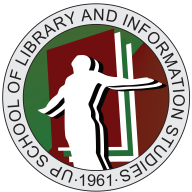Submissions
Submission Preparation Checklist
As part of the submission process, authors are required to check off their submission's compliance with all of the following items, and submissions may be returned to authors that do not adhere to these guidelines.- The manuscript adheres to the requirements as stipulated in the Author Guidelines.
- The submission has not been previously published, nor is it under consideration for publication in another journal (when in doubt you may contact the editors or indicate an explanation for consideration in the Comments to the Editor section upon submission).
- The submission file/s is/are in MS Word *.doc or *.docx format (preferred). Other compatible formats like OpenOffice or RTF document file format will be converted for refereeing.
- The text is single-spaced; uses a 12-point serif font (e.g. Times New Roman, Garamond); employs italics, rather than underlining (except with URL addresses); and all illustrations, figures, and tables are placed within the text at the appropriate points, rather than at the end.
- The text adheres to the APA writing and citation style (7th ed.).
- Where available, DOIs and URLs for the references have been provided.
- A disclosure statement regarding funding source information (or absence thereof) is included in the manuscript (refer to the Author Guidelines for the sample statement).
- A disclosure statement regarding potential source of conflict of interest (or absence thereof) is included in the manuscript (refer to the Author Guidelines for the sample statement).
- Before uploading the manuscript, the instructions in "Ensuring a Blind Review" have been followed.
Copyright Notice
Copyright
Authors of articles appearing in PhJLIS retain the copyright and full publishing rights without restrictions.
License Terms
All articles published by PhJLIS are licensed under the Creative Commons Attribution 4.0 International License. This allows anyone to share and adapt the work, provided that the original work and source are properly cited.
Privacy Statement
The names and email addresses entered in this journal site will be used exclusively for the stated purposes of this journal and will not be made available for any other purpose or to any other party.

